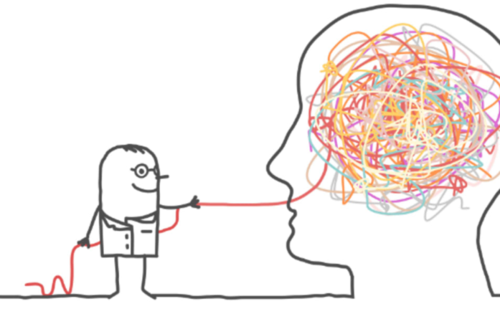Cognitive Restructuring is the reshaping of our cognition by directly working with our cognitive errors or distortions. We start by identifying our automatic thoughts, followed by our cognitive errors. Next, we examine the cognitive errors and end with a rebuttal, which serves us now and becomes handy in the future.
Steps 1 and 2 can be fun. While it rarely occurs to most of us to notice and record our automatic thoughts or cognitive errors, we usually find it helpful and like a fun game once we do. Steps 3 and 4, on the other hand, produce a different experience, and there are several reasons for this:
-
It is not intuitive
-
It can be intellectually challenging
-
It can be emotionally and mentally challenging
-
It takes practice to get good at and master it
-
Most clinicians, including experts in CBT, either find it hard to teach or do not teach it well, which means most people have no real point of reference or great models to learn from
-
Socratic Questioning, one of the most powerful and practical tools used in the process of Cognitive Restructuring, does not come easy to most of us
SWEET knows that the key and secret to effective Cognitive Restructuring is Socratic Questioning.
In the present article, we will cover a general introduction of Socratic Questioning. In subsequent articles, we’ll go over the nuts and bolts of how to best use Socratic Questioning in Cognitive Restructuring.
Let us start by understanding the reasons why Socratic Questioning is so powerful:
Questions stimulate our brains. We cannot ignore them. We cannot remain passive when questions are posed. And, as we engage with them, our minds become activated enough for learning to take place. Learning then coincides with the formation and strengthening of our synaptic connections; the electrochemical basis for Cognitive Restructuring.
Further, Socratic Questioning is not just any kind of Questioning. We are not looking into who’s right (My automatic thought, along with its cognitive error or my attempt at bringing objectivity?). Due to what we call the heuristic effect of congruency, the moment we think of something, we tend to hold on to it, find ways to defend it, and look for ways to prove it to be true. We do that even when the challenger of our thought is us. This makes Step 3 in Cognitive Restructuring – Examining the Cognitive Error, so challenging, and this in part explains why Socratic Questioning is so helpful.
Socratic Questioning helps because it removes the challenging aspect. Using Socratic Questioning allows us to lower our guard and allow the process to unfold. It breaks one cognitive error down at a time to its smallest part, allowing us to see the real issue and the how to best counter argue it and get the best possible rebuttal.
Tell us:
-
What’s your experience with the Socratic Questioning and with its use in Cognitive Restructuring?
-
What challenges have you encountered when using it?
-
What do you think it will take for you to make more use of it more often and more effectively?
Please join us on Wednesday, November 4, 2020 7-9pm EST for a Live Application of CBT, where we will be using practice cases to go over how to best use the Socratic Questioning for the best results in Cognitive Restructuring
Thank you for considering, and until then,
Karen and Mardoche

